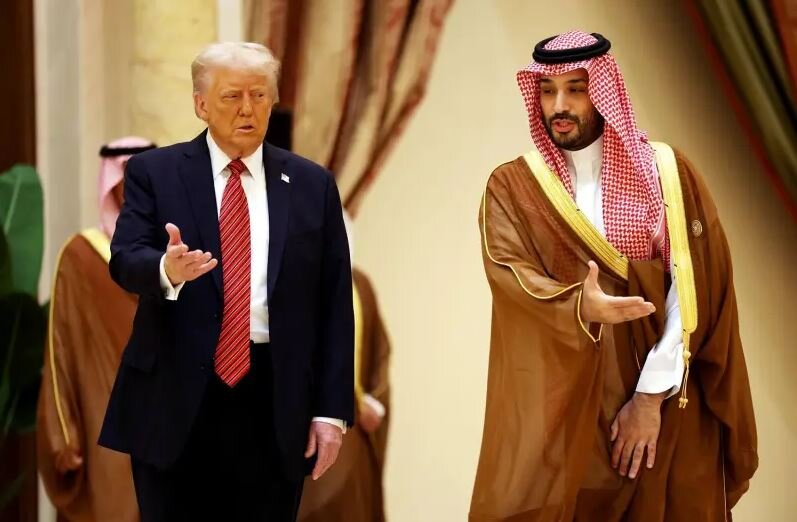While Donald Trump’s recent visit to Riyadh may be called a business trip, in the world of Western Asian politics, symbolism is often more eloquent than press releases. For many in the region, his presence in Saudi Arabia felt like the opening act of a wider geopolitical manipulation.
Riyadh is not a new ground for Trump. His first international visit as president in 2017 was Saudi Arabia’s capital, where he was accepted by fanfare and inked into a massive arms deal. Fast forward to 2025, and although he is no longer in office, Trump’s return is being closely monitored. It reminds me that he is still influential and that he may set the stage for a political comeback.
As Israel’s catastrophic war in Gaza continues, tensions with Iranian boiled food continue, and regions at the edge where oil markets remain unstable, Trump’s re-entry into the scene introduces another variable into the already complicated equation.
Energy, arms, and influence
While officially a guest on the well-known investment forum, the informal meeting between Crown Prince Trump and Crown Prince Mohammed bin Salman reportedly delved into more strategic topics. From energy cooperation and arms trade to regional stability, these debates suggest attempts to rekindle the trade alliance that defined Trump’s early Western Asia policy.
For Saudi Arabia, the outlook for more predictable, transaction-oriented US partners may be appealing, especially amidst the Biden administration’s frustration with its cautious and often contradictory approach to localities. For Trump, Saudi Arabia offers more than business opportunities. A geopolitical launchpad.
Would you like to reassemble the Union?
There is a tweet that Trump may be laying the foundation for a new coalition similar to the Abraham agreement. This time Riyadh is more intensive. With normalisation between Saudi Arabia and Israel stagnating under Biden, Trump’s approach could support Palestinian concerns with economic incentives and mutual security arrangements. This is particularly opposed to what is considered a common threat in Iran.
This move will definitely raise the alarm for Tehran. Iran has been building regional partnerships for years, from Hezbollah in Lebanon to Ansarlah in Yemen. The Israeli axis of the US and Saudi Arabia could urge Iran to double these partnerships or seek new ones, perhaps with the help of Russia and China.
Iran’s careful watch
Iranian officials have declined to comment in person about Trump’s visit so far. However, Iranian media portrays the trip as a shallow PR stunt intended to boost Trump’s image ahead of the potential election run. But behind the scenes, Tehran may be taking his visit seriously.
Memories of Trump’s “Max Pressure” Campaign – the assassination of General Qassem Soleimani and withdrawal from the 2015 nuclear deal are still fresh. For Iranian policymakers, the outlook for President Trump, coupled with the revitalized Saudi alliance, may justify a strategic readjustment.
Biden vs. Trump: Fork Pass
Biden’s Western Asian approach is defined by careful diplomacy, quiet talk with Iran, and limited involvement with the monarchy of the Persian Gulf. His administration tried to balance human rights concerns with strategic interests, often leaving allies like Saudi Arabia in dissatisfaction.
In contrast, Trump is not traded as a secondary. He praises his loyalty and supports big headline deals. His return to the field could appeal to local stakeholders who prioritize security assurances and economic partnerships for governance lectures.
Western Asia has already navigated multiple flashpoints. Wars in Gaza, unrest in the West Bank, maritime operations in the Red Sea, ongoing tensions in Syria and Iraq. Trump’s sudden presence in Riyadh adds another layer to this volatile mix.
For Iran, it may feel like an early rumble of a revived containment strategy. For Israel, it can show the return of a US partner who is willing to let it go freely. And for Saudi Arabia, it is an opportunity to hedge bets in an uncertain global environment.
Was Trump’s visit simply symbolic or is it showing a deeper strategy? The answer is probably somewhere in between. What’s clear is that Trump still knows how to change the conversation. And in West Asia, even short visits can cast long shadows.
One thing is certain, as braces in Iran, Saudi Arabia and the wider region pretend to: Trump is back in the Persian Gulf and the geopolitical chessboard could change again.

